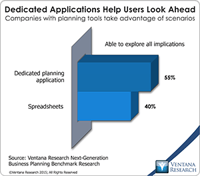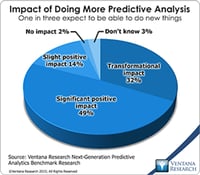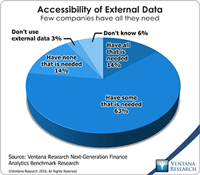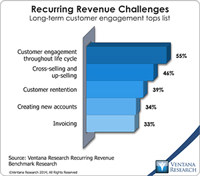Ventana Research is happy to share insights gleaned from the latest Value Index research, an assessment of how well vendors’ offerings meet buyers’ requirements. The 2022 Revenue Performance Management (RPM) Value Index is the distillation of a year of market and product research. Drawing on our Benchmark Research, we apply a structured methodology built on evaluation categories that reflect the real-world criteria incorporated in a request for proposal to vendors supporting the spectrum of...
Read More
Topics:
Sales,
Sales Performance Management (SPM),
Price and Revenue Management,
sales enablement,
Revenue Performance Management
As laid out in my recent Analyst Perspective, Revenue Management: The Opportunity for Innovation and Optimization, revenue management is a new way look at generating and managing the top line. It unifies multiple sources: the traditional focus on new customers to existing customers as well as all types of revenue from new, additional channels. This could include customer retention, upsell and cross sell, in addition to other selling channels such as through partners or digital sales channels...
Read More
Topics:
Sales,
Analytics,
Sales Performance Management (SPM),
Price and Revenue Management,
Digital Commerce,
Subscription Management,
AI & Machine Learning
The current pandemic has disrupted many of the traditional sales methods used by field-sales organizations to engage, and sell to, buyers. In an effort to provide help, many vendors have recently announced new features that focus less on the management of sales organizations and more on tools to help salespeople sell. This has been coupled with a renewed interest in using data to help with the science, alongside the art, of selling, as referenced in my AP: The Art and Science of Sales from the...
Read More
Topics:
Sales,
Analytics,
Data,
Product Information Management,
Sales Performance Management (SPM),
Digital Technology,
sales enablement,
Sales Engagement,
AI & Machine Learning
One of the oddities of corporate management is that, as a rule, nobody oversees managing profitability. CEOs are accountable for meeting company-wide financial targets and assign responsibility for achieving profitability levels to business unit owners across and down an organization. Sales quotas designed to achieve revenue goals are put in place, and budget owners have cost and margin objectives. But setting profitability objectives is not the same as managing profitability.
Read More
Topics:
Office of Finance,
Sales Performance Management (SPM),
Financial Performance Management,
Price and Revenue Management,
Digital Commerce,
Predictive Planning,
Subscription Management
Although historically there has been a hard divide between what are colloquially called “Inside and Field Sales,” changes over the last 10 years have narrowed the distinction. The pandemic has only accelerated the path to unifying sales activities commonly performed to engage buyers and customers. Characterized by a very disciplined and controlled endeavor, inside sales teams have been heavier users of technology. This has enabled more productive engagement including emails and calls, as well...
Read More
Topics:
Sales,
embedded analytics,
Analytics,
Business Intelligence,
Collaboration,
Internet of Things,
Sales Performance Management (SPM),
natural language processing,
intelligent sales,
sales enablement,
AI & Machine Learning
Here are some insights on Oracle drawn from our latest Value Index research, which provides an analytic assessment of how well vendor offerings address buyers’ requirements. The Ventana Research Value Index on Sales Performance Management 2019 is the distillation of a year of market and product research efforts by Ventana Research. We evaluated Oracle and eight other vendors in seven categories, five product-related adaptability, capability, manageability, reliability and usability) and two...
Read More
Topics:
Sales,
Customer Experience,
Contact Center,
Data,
Sales Performance Management,
Sales Performance Management (SPM),
Digital Technology,
Digital Commerce,
Predictive Planning,
Conversational Computing,
collaborative computing,
mobile computing,
Subscription Management,
agent management,
intelligent sales,
AI & Machine Learning
I hope this title captures your attention; I’m trying to make a point about the chaos going on in managing and operating marketing. What marketing needs in 2016 is to manage and optimize its efforts in a more unified manner. This perspective kicks off a new series on the challenges for marketing to automate or execute tasks and manage toward maximum performance. We all know that the craft of marketing is in need of significant transformation, from the CMO throughout the entire marketing...
Read More
Topics:
Big Data,
Predictive Analytics,
Social Media,
Customer Performance,
Business Analytics,
Business Collaboration,
Business Intelligence,
Business Performance,
Cloud Computing,
Financial Performance,
Information Applications,
Operational Intelligence,
Uncategorized,
CMO,
Information Optimization,
Sales Performance Management (SPM)
Technology innovation is accelerating faster than companies can keep up with. Many feel pressure to adopt new strategies that technology makes possible and find the resources required for necessary investments. In 2015 our research and analysis revealed many organizations upgrading key business applications to operate in the cloud and some enabling access to information for employees through mobile devices. Despite these steps, we find significant levels of digital disruption impacting every...
Read More
Topics:
Big Data,
Predictive Analytics,
Sales Performance,
Supply Chain Performance,
Governance,
Mobile Technology,
Operational Performance Management (OPM),
Customer Performance,
Operational Performance,
Analytics,
Business Analytics,
Business Collaboration,
Business Intelligence,
Business Performance,
Cloud Computing,
Financial Performance,
Governance, Risk & Compliance (GRC),
Information Applications,
Information Management,
Location Intelligence,
Operational Intelligence,
Uncategorized,
Workforce Performance,
Business Performance Management (BPM),
Financial Performance Management (FPM),
Information Optimization,
Sales Performance Management (SPM)
Using information technology to make data useful is as old as the Information Age. The difference today is that the volume and variety of available data has grown enormously. Big data gets almost all of the attention, but there’s also cryptic data. Both are difficult to harness using basic tools and require new technology to help organizations glean actionable information from the large and chaotic mass of data. “Big data” refers to extremely large data sets that may be analyzed computationally...
Read More
Topics:
Big Data,
Data Science,
Planning,
Predictive Analytics,
Sales Performance,
Social Media,
Supply Chain Performance,
FP&A,
Human Capital,
Marketing,
Office of Finance,
Operational Performance Management (OPM),
Budgeting,
Connotate,
cryptic,
equity research,
Finance Analytics,
Kofax,
Statistics,
Operational Performance,
Analytics,
Business Analytics,
Business Performance,
Financial Performance,
Business Performance Management (BPM),
Datawatch,
Financial Performance Management (FPM),
Kapow,
Sales Performance Management (SPM)
Aria Systems provides companies with software for managing subscription or recurring revenue business models. A recurring revenue business models includes three types of selling and billing structures: a one-time transaction plus a periodic service charge; subscription-based services involving periodic charges; or a contractual relationship that charges periodically for goods and services. Aria’s cloud-based software addresses key requirements of users in the marketing, sales, operations and...
Read More
Topics:
SaaS,
Sales,
Sales Performance,
Customer Engagement,
Customer Experience,
ERP,
Marketing,
NetSuite,
Office of Finance,
Recurring Revenue,
customer life cycle,
Customer Performance,
Operational Performance,
Business Analytics,
Business Performance,
Cloud Computing,
Customer Service,
Financial Performance,
Business Performance Management (BPM),
Sales Performance Management (SPM),
billing software


















